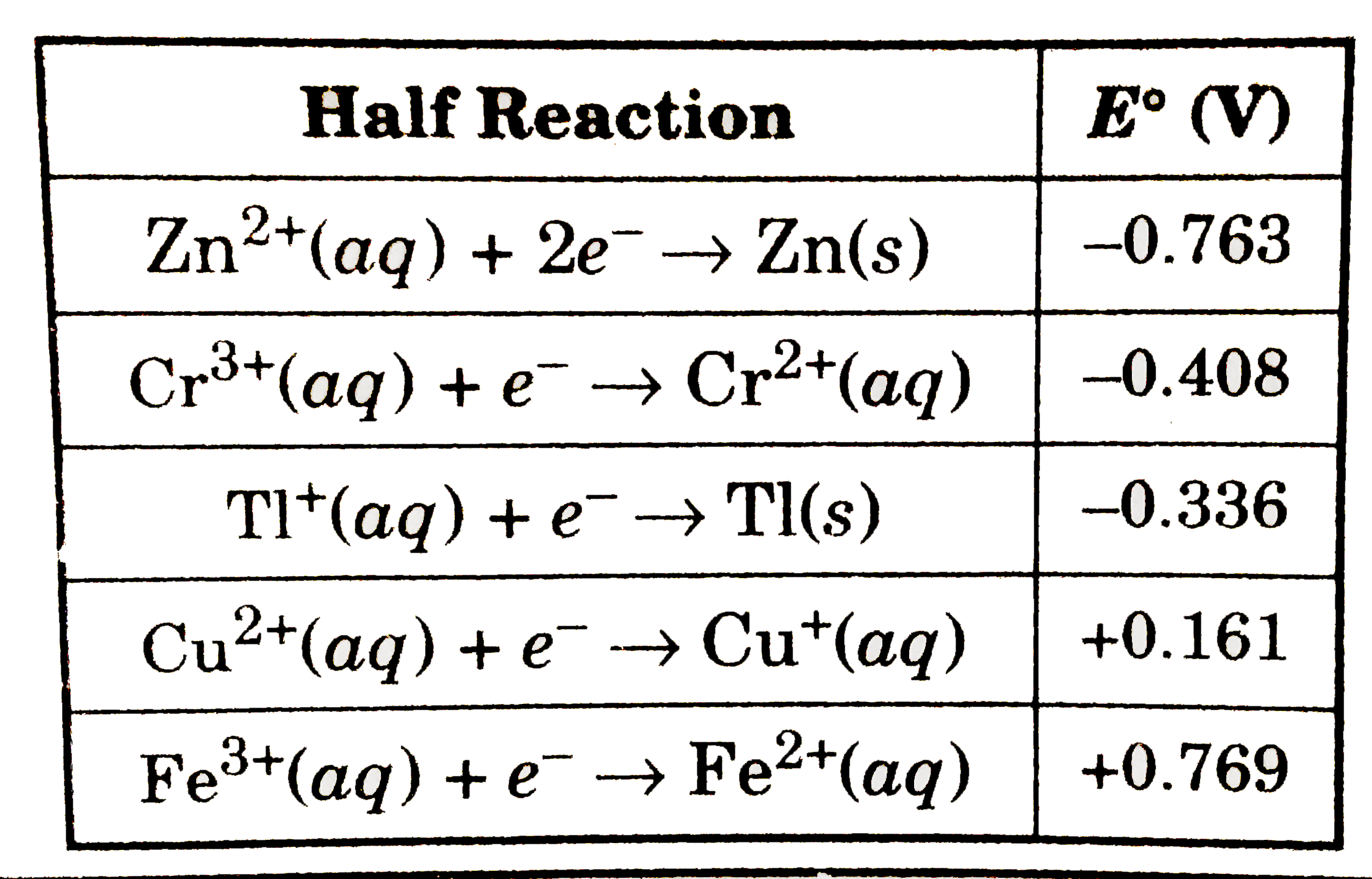What is the effect of added sodium thiocyanate on the following equilibrium?
Fe3+(aq)+SCN−(aq)↔[FeSCN]2+(aq)Solution in Telugu
When Some NaSCN is added, it gives SCN− ions in solution. The concentration of one of the reactants increases favouring the forward reaction of forming complex. The colour of solution darkens on adding NaSCN, showing an increase in the concentration of [FeSCN]2+ which is reddish brown.
Topper's Solved these Questions
- CHEMICAL EQUILIBRIUM BOOK - AAKASH SERIESCHAPTER - CHEMICAL EQUILIBRIUM EXERCISE - EXERCISE 1.1
5 Videos
- CHEMICAL EQUILIBRIUM BOOK - AAKASH SERIESCHAPTER - CHEMICAL EQUILIBRIUM EXERCISE - EXERCISE 1.2
13 Videos
- CHEMICAL BONDINGBOOK - AAKASH SERIESCHAPTER - CHEMICAL BONDINGEXERCISE - OBJECTIVE EXERCISE -3 (RECENT AIPMT/NEET QUESTIONS )
39 Videos
- CHEMICAL THERMODYANMICS BOOK - AAKASH SERIESCHAPTER - CHEMICAL THERMODYANMICS EXERCISE - Questions For Descriptive Answers
28 Videos
Similar Questions
What are irreversible reactions. Give examples.
View SolutionState and explain law of mass action.
View SolutionIn which of the following pairs, the two species are isostructural?
View SolutionHow does heat of neutralisation value change with the chemical nature of acid and base?
View Solution
Based on the standard reduction potentials above, which reaction(s) is (are) spontaneous?
(P) Cr2+(aq)+Fe3+(aq)→Cr2+(aq)+Fe2+(aq)
(Q) Cu2+(aq)+Fe2+(aq)→Cu2+(aq)+Fe3+(aq)
View SolutionThe equilibrium constant for the reaction : Fe^(3) + (aq) +SCN^(-)(aq) hArr Fe SCN^(2+) (aq) at 298 K is 138. What is the value of the equilibrium for the reaction? 2Fe^(3+) (aq) + 2SCN^(-) (aq) hArr 2Fe SCN^(2+) (aq)
View SolutionWhich of the following change at equilibrium will shift reaction in backward direction:
Fe3+(aq)+SCN−(aq)⇔Fe(SCN)2+(aq)
View SolutionThe following reaction is at equilibrium , underset("Yellow")(Fe_((aq))^(3+))+ underset("Colourless")(SCN_((aq)))rArrunderset("Deep red")([Fe(SNC)]_((aq))^(2+)) K_(c)=([Fe(SCN)])/([Fe^(3+)][SCN]) In the above reaction , colour intensity of red colour can be increased by :-
View Solutionदिए गए मानक इलेक्ट्रोड विभव का प्रयोग कर बताइए कि निम्न अभिक्रियाएं सम्भव है या नहीं-
(i) Fe3+(aq) तथा I−(aq)
(ii) Ag+(aq) तथा Cu(s)
(iii) Fe3+(aq)तथा Br−(aq)
(iv) Ag(s) तथा Fe3+(aq)
(v) Br2(aq) तथा Fe2+(aq).
View SolutionWhich of the following species/reagent can reduce Fe^(3+)(aq.) into Fe^(2+)(aq.) at normal condiitions? (NH_(4))_(2)S," "Hi," "Sn^(2+)(aq.)," "CN^(-)(aq.)," "NaNO_(2)," "SO_(2)," "Na_(2)S_(2)O_(3)," "SCN^(-)(aq.)," Acidifeid "NaIO_(3)
View SolutionWhat is ‘A’ in the following reaction?
2Fe3+(aq)+Sn2+(aq)→2Fe2+(aq)+A
View SolutionWhich of the following species/reagent can reduce Fe3+(aq.)into Fe2+(aq.) at normal condiitions?
(NH4)2S, Hi, Sn2+(aq.), CN−(aq.), NaNO2, SO2, Na2S2O3, SCN−(aq.), Acidifeid NaIO3
View SolutionThe equilibrium constant for the reaction : Fe^(3+)(aq)+SCN^(-)(aq)hArr Fe SCN^(2+)(aq) is 140 at 298 K. The equilibrium constant for the reaction : 2Fe^(3+)(aq)+2SCN^(-)(aq)hArr 2Fe SCN^(2+)(aq) is :
View SolutionThe following reaction on equilibrium, underset("पीला")(Fe_((aq))^(3+))+ underset("रंगहीन")(SCN_((aq))^(-)) hArr underset ("गहरा लाल")([Fe(SCN)]_((aq))^(2+)), K_(c)=([Fe(SCN)]^(2+))/([Fe^(3+)][SCN^(-)]) In the above reaction, the intensity of red color can be increased by
View SolutionWhat is the effect of addition of oxalic acid and HgCl2 to the following equilibrium
F3+aq+SCN−↔aq[Fe(SCN)]2+aq
Yellow Colourless Deepred
View Solution
